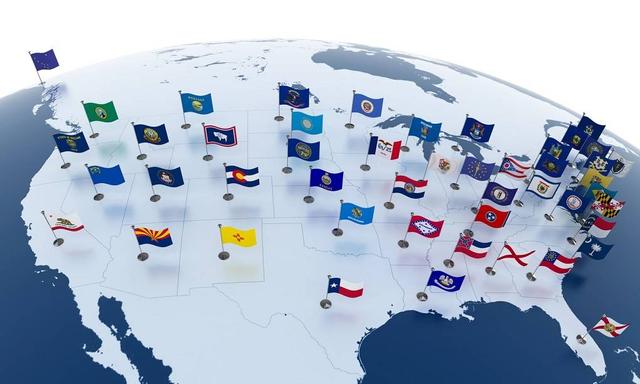
Say Goodbye To Yard Fleas: Proven Techniques For Control
By: ROS Team
Fleas are tiny, wingless insects that can cause a big problem in yards and outdoor living spaces. These pests are not only a nuisance, but they can also transmit diseases to both pets and humans.
Fleas thrive in warm and humid environments, making yards and gardens the perfect breeding ground for them. If left untreated, flea infestations can quickly spiral out of control, leaving homeowners with a significant pest problem on their hands.
The goal of this article is to provide proven techniques for controlling fleas in yard. We will cover everything from preventing infestations in the first place to effective chemical and natural control methods.
By the end of this article, you will have the knowledge and tools you need to say goodbye to yard fleas and enjoy a flea-free outdoor living space.
Understanding Fleas
In order to effectively control fleas in your yard, it’s important to first understand their biology and behavior.
Fleas are small, wingless insects that measure around 1/16 to 1/8 of an inch in length. They have a flattened body shape, making it easy for them to move through the fur of their host animals.
They have six legs and are reddish-brown in color, they are ectothermic, which means they are cold-blooded and require a host animal to maintain their body heat.

There are several different types of fleas that can infest yards, but the most common is the cat flea (Ctenocephalides felis). This flea can infest not only cats but also dogs, wild animals, and even humans.
Fleas are known to be vectors of several diseases, such as the bubonic plague, murine typhus, and tapeworms.
Fleas have a four-stage life cycle: egg, larva, pupa, and adult. They require a host animal to complete its life cycle, with adult fleas laying their eggs on the host animal’s fur. These eggs then fall off the host and into the environment, where they hatch into larvae.
The larvae feed on organic debris, such as dead skin and feces, and eventually pupate. Adult fleas emerge from the pupae and immediately seek out a host animal to feed on.
By understanding the biology and behavior of fleas, you can better target your control efforts and break the flea life cycle at the appropriate stage.
Prevention And Cultural Control
Prevention and cultural control methods are the first lines of defense against flea infestations in yards. By implementing these techniques, you can reduce the likelihood of an infestation occurring in the first place or at least reduce the population of fleas.

1- Maintaining A Healthy Lawn
A well-maintained lawn is less likely to provide the ideal environment for fleas to thrive. This includes regular mowing, watering, and fertilization to ensure that the grass is thick and lush.
2- Reducing Clutter And Debris In The Yard
Fleas love to hide in warm and humid environments such as piles of leaves, tall grass, or piles of wood. By reducing clutter and debris in your yard, you are reducing the number of potential hiding spots for fleas.
3- Keeping Pets Treated With Flea Preventatives
Fleas often infest yards by hitchhiking on pets. By keeping your pets treated with flea preventatives, you are reducing the number of fleas that they bring into the yard.
4- Mowing And Watering
Mowing your lawn regularly and watering the yard properly can help to keep the flea population under control. Mowing cuts down the tall grass, which is a favorite hiding spot of the fleas, and also prevents the growth of weeds that may harbor flea larvae.
Watering the yard helps to keep the area moist, which is not suitable for fleas to survive.
By following these prevention and cultural control methods, you can make your yard less hospitable to fleas and reduce the likelihood of an infestation occurring. It is important to note that these methods should be used in conjunction with other control methods for the best results.
Chemical Control
Chemical control methods can be an effective way to control fleas in yards, but it’s important to use them safely and correctly.

Insecticides
There are a variety of insecticides available for flea control, including both synthetic and natural options. These products are designed to kill adult fleas and larvae on contact. It is important to choose an insecticide that is labeled for outdoor use and for flea control. Also, it is important to read and follow the instructions on the label carefully.
IGRs (Insect Growth Regulators)
These products are designed to disrupt the flea life cycle by preventing eggs and larvae from developing into adults. IGRs are considered safer than insecticides, and they can be used in conjunction with other control methods.
When using chemical control products in your yard, it’s important to follow these safety precautions:
- Wear appropriate personal protective equipment (PPE) such as gloves, goggles, and a mask.
- Follow the label instructions carefully.
- Do not apply the products in windy conditions or when rain is expected.
- Keep children and pets away from treated areas until the product has dried.
- Store the products in a safe place, out of reach of children and pets.
Natural Control
If you prefer a more natural approach to controlling fleas in your yard, there are several options available.

Beneficial Nematodes
These are tiny, worm-like creatures that feed on flea larvae. They can be applied to the yard with a hose-end sprayer or watering can.
Beneficial nematodes are considered safe for use around humans and pets, but it’s important to follow the manufacturer’s instructions for application rates and timing.
Diatomaceous Earth
This is a powder made from fossilized algae that can be dusted on the lawn and other areas where fleas may be present.
It works by dehydrating and killing the fleas and their larvae. It is important to use food-grade diatomaceous earth and to avoid inhaling the powder during application.
Neem Oil
This is an oil derived from the seeds of the neem tree that can be used as a flea repellent and insecticide. It can be applied to the lawn, garden beds, and other areas where fleas may be present. It’s important to follow the manufacturer’s instructions for application rates and timing.
As with chemical control methods, it’s important to follow safety precautions when using natural control methods:
- Read and follow the manufacturer’s instructions carefully.
- Store the products in a safe place, out of reach of children and pets.
- Keep children and pets away from treated areas until the product has dried or until the manufacturer’s instructions indicate it is safe.
Final Words
Fleas can be a serious problem in yards and outdoor living spaces. By understanding their biology and behavior, as well as the different control methods available, you can effectively control fleas and enjoy a flea-free outdoor space.
Related Article:
How to Get Rid of Ants in Yard
How do you Get Rid of Mosquitoes in the House/Apartment
What you should know about NYC Rat Issue








